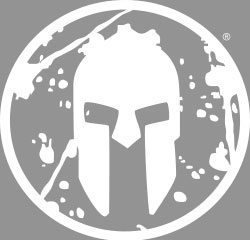7 Ways to Tackle the Exercise Headache that Spartans Get

The human head is heir to no shortage of pains, from cluster migraines to and the “cephalalgia” spawned by persistent squinting or a hog-whimpering hangover. But there's nothing worse than a persistent, consistent exercise headache.
More than 100 types and subtypes of cranial agony are enumerated in the International Classification of Headache Disorders, a (literally) headache-inducing inventory of conditions that can set our noggins throbbin’. There’s even a type that can make things miserable for the fittest of the fit: PEH, or primary exercise headache.
Couch potatoes need not worry about these. Spartans should. It takes hard work to bring one on. “PEH is associated with very strenuous cardio exercise—sports like swimming, cycling, and running,” explains Rashmi B. Halker, M.D., FAHS, a neurologist in the division of headache medicine at the Mayo Clinic in Arizona. “You need to double your heart rate and really increase your blood pressure for primary exercise headaches to come on.”
The Exercise Headache Backstory
First described in the scientific literature in 1968, exercise headaches were originally considered quite rare. One Danish study, for example, found that only about one in 100 in the general population ever suffers one. A more recent review, however, in the journal Current Pain and Headache Reports suggests this stat may just reflect the largely sedentary status of most adults. Research on 14,131 competitive cyclists found the rate of PEH soared to 26 percent. Bottom line: If you find yourself suffering a pulsating, throbbing headache during or shortly after intense exercise, chances are it’s not the garden-variety kind.
PEH appears to share features with other headache types with unusual triggers—notably, those precipitated by coughing and sex. As for the biological mechanism for all three, researchers still aren’t entirely sure, though vascular causes—such as excess blood being pumped to the brain—do not appear to play a role. “It’s looking like the real cause of the pain is a neurologic problem,” explains Dr. Halker. “That is, a disturbance of specific pain-processing pathways within the brain itself.”
Related: The Migraine Miracle
How to Deal with Primary Exercise Headache
The news is not all grim. For one thing, PEH is rarely dangerous—in fact, before a recent change in nomenclature, such headaches were widely classified as “benign exertional headaches.” They are also “self-limited,” which means they go away on their own, with or without treatment, and without causing any lasting harm.
Even better news: it turns out that PEH responds very well to a very specific NSAID called indomethacin. Non-steroidal anti-inflammatory drugs come in numerous forms, from ibuprofen to naproxen. So why does indomethacin, but not other drugs in its class, provide such relief?
It turns out that indomethacin targets a specific enzyme in the brain, nitric oxide synthase, that its chemical cousins ignore. Why exactly this shuts down PEH isn’t fully understood. But the effect is so pronounced that PEH, along with cough and sex headaches, is sometimes classified by researchers as an indomethacin-responsive headache.
Related: Why Muscle Recovery is More Important than Training
7 Ways to Tackle Primary Exercise Headache
If your head sometimes bangs like a banshee from strenuous workouts or intense competition, Dr. Halker offers some recommendations:
- First, see a doctor to rule out other causes for your pain. If all looks good, ask for a trial of indomethacin (available by prescription only.) If this brings a speedy end to your next exercise headache, it will prove PEH is the right diagnosis.
- Hydrate, hydrate, hydrate. Both dehydration and low blood sugar can set up PEH. Make sure to eat a small snack and hydrate moderately before and during your next heavy workout.
- De-stress and max relaxation techniques. Stress can be a trigger, too. If you’re the type to wig out before a big competition, practice relaxation techniques to keep the heebie-jeebies in check.
- Watch out for caffeine overload. Back off of the coffee intake, particularly if you get PEH a lot. Excess caffeine, says Dr. Halker, is associated with an increase in headache frequency over time. “This is why we really try to get our patients to cut back on caffeine,” she says.
- Avoid alcohol. Don’t make PEH worse by drinking alcohol when your head is throbbing. The one-two punch of all-out exercise capped by celebratory beer will only prolong your misery.
- Take preventative meds. If you suffer PEH frequently or know the kinds of workouts that trigger it, ask your doctor about taking a pre-exercise dose of indomethacin to prevent a headache from starting.
- Try a low dose of beta blockers. If you can’t tolerate indomethacin, says Dr. Halker, a low dose of beta blockers is a reliable second-line treatment for keeping PEH at bay.




